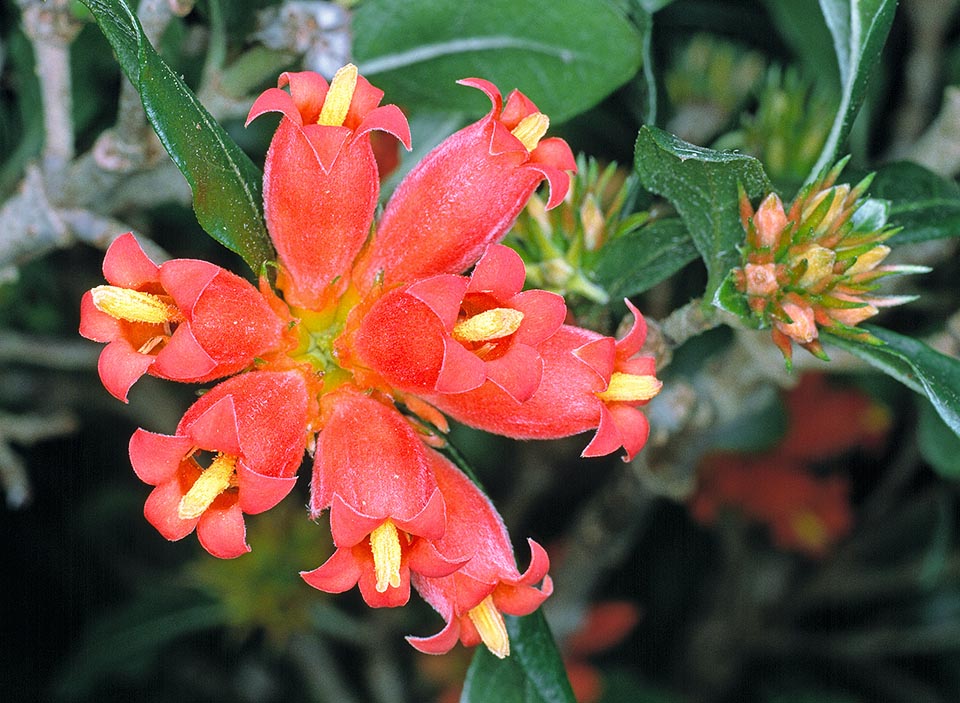Family : Rubiaceae

Text © Pietro Puccio

English translation by Mario Beltramini
The Burchellia bubalina (L.f.) Sims (1822) is native of South Africa (Natal, Cape Province, Swaziland and ex-Transvaal territories), where it grows mostly in evergreen forests, or at the margins of the same, in mountain or plain areas characterized by abundant rainfalls.
The genus is honoured to the English naturalist and explorer William John Burchell (1781-1863); the name of the species is seemingly coming from the Latin “bubalus” = oxlike, bovine, with possible reference to the horn-shaped lobes of the calyx.
Common names: “wildegranaat” (Afrikaans); “wild pomegranate”, “buffalo wood”, “buffalo horn” (English); “Wilder Granatapfel”, “Afrikanischer granatapfel” (German).
Shrub or slow growing small tree, evergreen, with an unusually hard wood, with specimen which in the wild can reach at times a height of 8-10 metres, but which normally keeps much lower (2-4 m), with coriaceous and glossy ovate leaves, of a dark green colour, 6-16 cm long and 3-8 cm broad. The inflorescences are terminal, with several tubular flowers, long about 25 mm, of a bright red to orange colour and covered by a thin hair.

Slow growing South Africa shrubby evergreen species, Burchellia bubalina may at times reach 10 m of height. Showy tubular 25 mm flowers © Giuseppe Mazza
Plant appreciated for its ornamental characteristics, suitable also for small gardens thanks to its moderate size, due to its slow growth. Can be cultivated both in full sun and in partial shade in tropical, subtropical and temperate climate areas, provided it is regularly irrigated during the dry periods; rather sensitive to low temperatures when young, if adult can stand sporadic lowering of some degrees under 0°C; finally, it must be kept in mind, for implant purposes, that it is a plant which loves rather acid soils.
Synonyms: Lonicera bubalina L.f. (1782); Canephora capitata Willd. (1798); Cephaelis bubalina (L.f.) Pers. (1805); Burchellia capensis R.Br. (1820); Burchellia parviflora Lindl. (1825); Cinchona capensis Burm. ex DC. (1830); Burchellia kraussii Hochst. (1842); Burchellia major Heynh. (1846); Burchellia speciosa Heynh. (1846); Burchellia capensis var. parviflora (Lindl.) Sond. (1865); Genipa capensis (R.Br.) Baill. (1880).
→ To appreciate the biodiversity within the RUBIACEAE family please click here.
